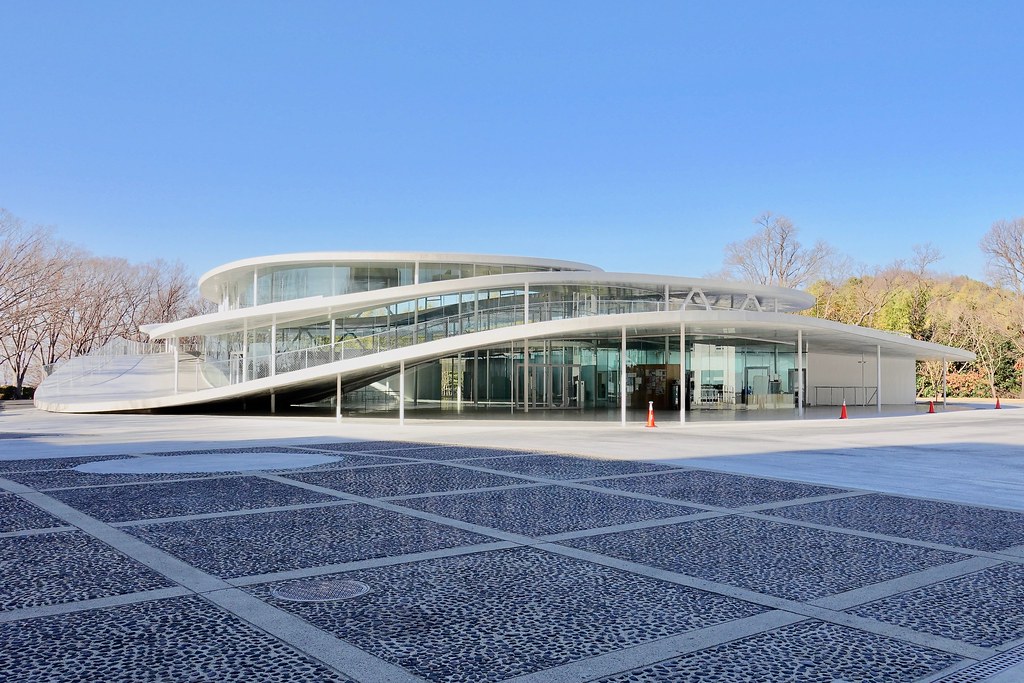into the art and science of building design, discussing its key principles
Building design is a multifaceted endeavor that combines artistic creativity with practical functionality and technical know-how. It plays a pivotal role in shaping the built environment around us, from homes and offices to schools and skyscrapers. In this in-depth exploration, we will delve into the art and science of building design, discussing its key principles, the influence of architecture on our lives, and the role of sustainability in shaping the future of design.
1. The Essence of Building Design
Building design, often referred to as architectural design, is the process of conceiving, planning, and creating structures that serve a specific purpose while also harmonizing with their surroundings. It involves translating a vision into a tangible, functional, and aesthetically pleasing space. The essence of building design lies in its ability to blend artistic expression, human needs, and structural integrity.
2. The Impact of Architecture on Our Lives
Architecture is the most visible form of art, and its influence extends beyond aesthetics; it touches the core of human existence. Here’s how architecture impacts our daily lives:
2.1. Spatial Experience
Architecture has the power to shape how we perceive and experience space. A well-designed space can evoke emotions, inspire creativity, and influence our mood. Think of the soothing ambiance of a well-designed home, the grandeur of a historic cathedral, or the innovation fostered by a modern workplace.
2.2. Functional Needs
Buildings are primarily functional structures that serve various purposes – homes, offices, hospitals, schools, and more. Effective architectural design ensures that these spaces meet the specific needs of their users, from providing shelter and comfort to fostering collaboration and productivity.
2.3. Cultural and Historical Identity
Architecture reflects the culture and history of a place. Architectural styles and elements can tell stories about a region’s heritage, values, and social norms. Preserving and adapting historical structures allows us to connect with the past and maintain our cultural identity.
2.4. Sustainable Living
Architecture plays a critical role in addressing environmental challenges. Sustainable building design focuses on minimizing energy consumption, using eco-friendly materials, and reducing waste. It also considers factors like natural lighting and ventilation to enhance indoor environmental quality.
3. The Design Process
The process of building design is a complex and iterative one, involving several stages from conceptualization to execution. Here are the primary stages in the design process:
3.1. Programming and Conceptualization
The process begins with defining the project’s purpose and objectives. This stage involves discussions with clients and users to understand their needs, budget, and expectations. Architects create a concept that encapsulates the vision for the project.
3.2. Schematic Design
Schematic design is the initial visual representation of the project. Architects produce rough sketches and diagrams to illustrate design concepts, space planning, and the general layout of the building.
3.3. Design Development
During the design development phase, architects refine the project’s scope, scale, and technical details. More detailed drawings, including floor plans, elevations, and sections, are developed. At this stage, cost estimates and material selections become more defined.
3.4. Construction Documents
This phase involves creating comprehensive construction documents. These include detailed drawings, specifications, and schedules that guide the construction team. The documents must meet legal and regulatory requirements and ensure the project’s compliance with building codes.
3.5. Bidding and Negotiation
Once construction documents are completed, the project is put out for bids, and contractors submit proposals. The client and architect evaluate the bids, negotiate contracts, and select the contractor who best meets the project’s requirements.
3.6. Construction and Oversight
The construction phase involves the actual building of the project. Architects often provide construction oversight to ensure that the work aligns with the design and quality standards.
3.7. Post-Occupancy Evaluation
After the building is complete and in use, a post-occupancy evaluation may be conducted to assess how well the design meets the intended goals. Feedback from users and occupants can be valuable for future projects and improvements.
4. Principles of Good Building Design
Achieving a successful building design involves adhering to several fundamental principles. These principles are the guiding lights that architects rely on to create spaces that are both functional and aesthetically pleasing:
4.1. Functionality
The primary purpose of a building is to serve its intended function. The design must prioritize the practical needs of the users. Efficient space planning and the arrangement of rooms and facilities are essential for functionality.
4.2. Aesthetics
Aesthetics play a critical role in architectural design. A well-designed building should be visually appealing, creating a sense of harmony, balance, and proportion. Architectural elements, materials, colors, and texture contribute to the overall visual impact.
4.3. Sustainability
Sustainability has become a paramount consideration in building design. Sustainable architecture focuses on minimizing the environmental impact of a structure through energy efficiency, waste reduction, and the use of eco-friendly materials.
4.4. Safety and Accessibility
Safety is non-negotiable in building design. The design should consider safety codes, fire regulations, and accessibility standards to ensure that the building is safe and accessible to all, including people with disabilities.
4.5. Flexibility and Adaptability
A well-designed building should have a degree of flexibility and adaptability to accommodate changing needs over time. Spaces should be easily reconfigured or repurposed as requirements evolve.
4.6. Contextual Integration
Buildings do not exist in isolation but are part of a larger context. Good design ensures that the building integrates harmoniously with its surroundings, whether it’s in an urban or natural setting.
5. Styles and Architectural Movements
Architecture has witnessed various styles and movements over the centuries, each with its unique characteristics and influences. Some of the most notable architectural styles include:
5.1. Classical Architecture
Classical architecture, rooted in ancient Greece and Rome, is characterized by its use of columns, symmetry, and orders such as Doric, Ionic, and Corinthian. It has had a profound impact on Western architecture.
5.2. Renaissance Architecture
The Renaissance era brought a revival of classical ideas and forms, resulting in harmonious and proportioned designs. The works of architects like Andrea Palladio and Leon Battista Alberti embody Renaissance principles.
5.3. Modernism
Modernism emerged in the early 20th century and rejected traditional ornamentation. It focused on functionality, minimalism, and the use of new materials. Architects like Le Corbusier and Ludwig Mies van der Rohe were pioneers of this movement.
5.4. Post-Modernism
Post-modernism reacted against the austerity of modernism. It reintroduced ornamentation, historic references, and a more eclectic approach to design.
5.5. Contemporary Architecture
Contemporary architecture encompasses a wide range of styles and approaches. It often incorporates advanced technology and sustainable design principles. Prominent architects such as Frank Gehry and Zaha Hadid have made significant contributions to contemporary architecture.
6. Sustainability in Building Design
Sustainability has become a defining factor in contemporary building design. Sustainable architecture focuses on reducing a building’s carbon footprint and its impact on the environment. Key elements of sustainable design include:
6.1. Energy Efficiency
Designing for energy efficiency involves optimizing a building’s orientation, incorporating natural ventilation, and using energy-efficient materials. It may also include the use of renewable energy sources like solar panels.
6.2. Sustainable Materials
Sustainable building materials are those that have minimal environmental impact, are often recycled or reclaimed, and are produced with responsible manufacturing practices. Examples include bamboo, reclaimed wood, and recycled steel.
6.3. Water Conservation
Sustainable design considers water conservation through efficient plumbing fixtures, rainwater harvesting, and the use of drought-resistant landscaping.
6.4. Indoor Environmental Quality
Creating healthy and comfortable indoor environments is essential. Sustainable design focuses on indoor air quality, natural lighting, and thermal comfort for occupants.
6.5. Site Selection and Preservation
Site selection and site preservation are key components of sustainability. Minimizing the disruption of natural landscapes, protecting local ecosystems, and ensuring responsible land use are integral to sustainable design.
7. The Future of Building Design
The future of building design is an exciting landscape that continues to evolve with technological advances and societal shifts. Several trends and developments are shaping the way we approach architecture:
7.1. Green Building Certification
Green building certifications like LEED (Leadership in Energy and Environmental Design) and BREEAM (Building Research Establishment Environmental Assessment Method) are becoming standard practices for sustainable building design.
7.2. Smart Buildings
The integration of technology into building design is on the rise. Smart buildings incorporate sensors, automation, and data analytics to optimize energy use, enhance security, and improve the overall user experience.The advent of the digital age has ushered in a new era of innovation in urban planning and architecture, and at the forefront of this transformation are smart buildings. These structures are not merely bricks and mortar but interconnected hubs of technology that enhance comfort, convenience, efficiency, and sustainability. In this article, we will explore the concept of smart buildings, their components, benefits, challenges, and their role in shaping the future of urban living.
7.3. Adaptive Reuse
Adaptive reuse involves repurposing existing buildings for new functions. This trend promotes sustainability and preservation of cultural heritage.
7.4. Resilient Design
Resilient design is becoming increasingly important due to the effects of climate change. It involves designing buildings to withstand natural disasters, such as hurricanes, floods, and wildfires.
7.5. Biophilic Design
Biophilic design incorporates nature and natural elements into the built environment to improve well-being and connect people with the natural world. This approach enhances the quality of life for building occupants.
7.6. Modular and Prefabricated Construction
Modular and prefabricated construction methods are gaining popularity for their efficiency and cost-effectiveness. These approaches involve manufacturing building components off-site and assembling them on-site.
8. Conclusion
Building design is a dynamic field that blends art, science, and a deep understanding of human needs and the environment. It has the power to shape the world we live in, influence our experiences, and contribute to a more sustainable and resilient future.
As we move forward, the principles of functionality, aesthetics, sustainability, and adaptability will continue to guide architectural innovation. The integration of technology, the embrace of sustainable practices, and a commitment to creating spaces that improve our quality of life will be at the heart of the future of building design.
Building design is not merely about creating structures; it’s about crafting spaces that inspire, enrich, and endure.
Building design is an ever-evolving field with a profound impact on our lives and the world around us. If you have specific questions or need further information about any aspect of building design, please feel free to ask.





